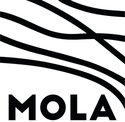Farringdon Station, Minor Works and Utility Diversions, Hayne Street (Crossrail XSF10)
Museum of London Archaeology, 2019. https://doi.org/10.5284/1055106. How to cite using this DOI
Data copyright © Crossrail Ltd, Museum of London Archaeology unless otherwise stated
This work is licensed under a Creative Commons Attribution 4.0 International License.
Primary contact
Karen
Thomas
Head of Archive
Museum of London Archaeology
Resource identifiers
- ADS Collection: 3064
- DOI:https://doi.org/10.5284/1055106
- How to cite using this DOI
Introduction

Combined general and targeted watching briefs were carried out at the site of Crossrail Farringdon Eastern ticket Hall by the Museum of London Archaeology (MOLA). Natural gravels were not exposed at Formation level (15.10m OD) . Disarticulated human remains (probably associated with the medieval burial ground in Charterhouse Square) were recovered within a later levelling deposit dated1480-1600. Suggesting that the burial ground may have extended further west then expected. A series of post medieval dumps and a pit, as well as garden soil horizons are consistent with the low levels of human activity in the area after the formation of Charterhouse square gardens in the 16th century.
Seven trenches were evaluated during a field evaluation in 2011, exposing one heavily truncated Roman pit dated 200-400 AD. No evidence of Saxon activity was identified. Medieval remains were limited to one large rectangular rubbish pit, truncated by later post-medieval activity. An east- west aligned channel, filled with a marsh like deposit dated to the 16-17th centuries and later early post medieval backfill was identified, along with two phases of postholes potentially associated with the management of the channel and its environs. Extensive post-medieval remains were identified in the form of rubbish pits, soakaways, phases of culvert, and more recently the backfilled basements of 19th-century buildings.
A targeted watching brief was undertaken in 2011 in one trench at the junction of the NW corner of Charterhouse Square and Charterhouse Street. Natural geology was truncated by 17-18th-century remains in the form of a cess/rubbish pit. Constructed from reused (1666-1700) bricks, and filled with refuse (ceramic fragments and tobacco pipes dated 1730-50) it is most likely associated with either the gate house at the western entrance to Charterhouse Square or dwellings on the junction of Charterhouse Square and Charterhouse Lane visible on the Ogilby and Morgan map of 1682 and subsequent publications. Disarticulated human remains were found within a substantial demolition layer deposited in the 19th century. The two femurs and a tibia, representing at least two individuals, are thought to have been redeposited from the outer cemetery of Charterhouse, used as a Black Death burial ground in the 14th century and possibly later. This evidence is, however, equivocal as to whether this trench lay within or outside the burial ground. A brick wall aligned east-west represents 19th-century activity, possibly associated with drainage.
Three engineering trial pits and a trench were excavated in 2012 at each grout shaft location. Natural London Clay was recorded in each shaft, varying in depth beneath ground level of between 600-1200mm. A variety of brick structures were exposed, all of which were constructed from materials in use during mid to late 19th-century. Three shallow narrow offset footings, exposed in the eastern and central shafts, were possibly foundations for the existing standing building, or scaffolding foundations/supports. Within the footprints of the eastern and central shafts, two brick and concrete walls were exposed that are likely to be the foundations for a railway that was in use until at least 1937. In the western grout shaft two 19th century narrow parallel walls were the remains of a southern perimeter wall that was demolished sometime during the 20th-century, after expansion of the market and extensions to the underground infrastructure. 19th and 20th-century backfill consisting of brick rubble overlay all these features, some of which had evidently been re-excavated numerous times over the last 150 years.
Truncated terrace gravels were revealed in the north during a field evaluation in 2013, overlain by clean brickearth, (possibly part of a palaeochannel) sealed under a 20m wide, 2.5m deep south-west-north-east aligned ditch, possibly forming the southern boundary to the Black Death cemetery or the medieval cloister of Charterhouse formed in 1371. Ceramics, leather shoes, belts (c 16th-17th-c) and animal skulls from the lower ditch fill suggest gradual blocking with rubbish, possibly accelerated by neglect and disuse associated with the closure of the monastic cloister to the north in 1537. A series of distinct oblique tips (after 1500) represent household waste yielded a Cologne vessel with Adam and Eve decoration, a 16th-century pipkin cooking vessel, and a variety of animal bones-potentially primary processing waste from Smithfield Market. In the south of the site truncation limited survival to an oval pit (date?) containing two timber barrels that given the proximity of the ditch and meat market may be associated with light industry, e.g. dyeing or tanning. Later features included a series of culverts; brick walls and a solitary post-pad (with reused worked medieval stone) are associated with buildings set slightly back from the western side of Hayne Street, depicted on the Ogilby and Morgan map of 1676. These deposits were truncated by 19th-and 20th-century basements and foundations.





